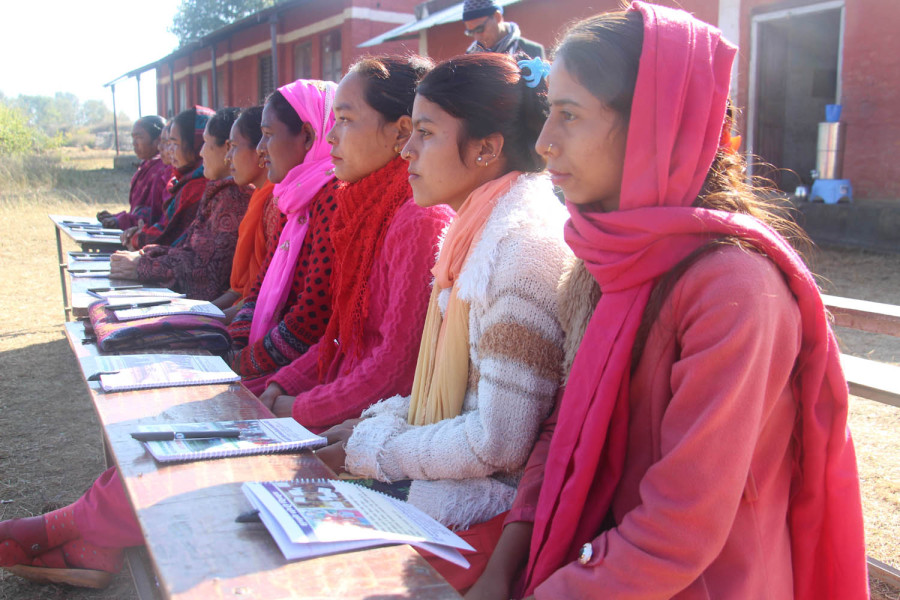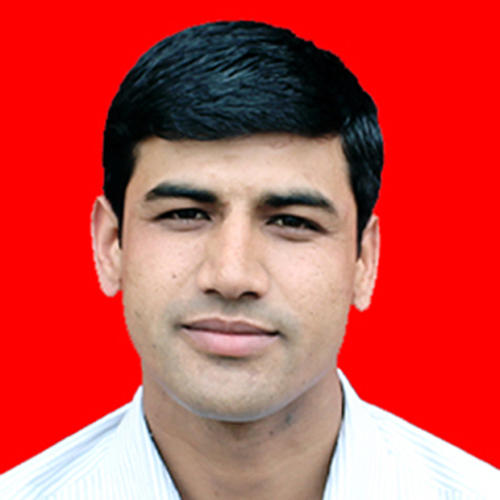Lumbini Province
Child marriage continues unabated in Dang
Activists advocating against child marriage say most children succumb to family pressure and there’s no help forthcoming from authorities.
Durgalal KC
A year ago, two teenage couples from Tulsipur Secondary School in Shantinagar Rural Municipality got married—despite the school administration’s repeated attempts to stop them.
Gobinda Bahadur Gharti, principal of the secondary school, said that he personally tried various methods to keep the children from getting married. “I even went up to their home and tried to convince the parents, but my efforts were in vain,” Gharti told the Post. “They got married anyway. One couple has given birth to a baby already as well, and the new mother has dropped out of school.”
In another incident, a few months ago, a female student from the same school eloped with a man from Kohalpur. Gharti said he immediately informed the police but they took no action.
“Nobody is dedicated enough to stop the practice of child marriage,” Gharti said. “The parents too do little. Children who are about to get married or have already gotten married need psychological counselling, but no one has paid any attention to such measures.”
The practice of child marriage is widespread in Dang. Chief of the rural municipality, Kaman Singh Dangi, said 33 percent of total marriages in his rural municipality are child marriages. “We are launching various campaigns considering the practice as a major challenge of the local unit,” Dangi said.
In Shantinagar Rural Municipality, over 20 percent of couples that are married as children give birth before 20 years of age, according to Hari Pun, who is the health department chief at the rural municipality. “There are incidents where women as young as 14 have given birth,” KC said. “As a result, many of them suffer from uterus-related diseases.”
Khim Bahadur Basnet, chair of the Childrens’ Network in Shantinagar-3, said in a short span of time, he has noted four child marriages in the area. He tried to keep them from happening but couldn’t, he said. “I called a number of students and rallied up to the house where the marriages were taking place, but nobody was there to support us,” he said. “We called the ward chair, but he didn’t come. The police didn’t come either. We haven’t gotten the support from the authorities, leaders and police.”
Pima Dangi, a ninth grader from Madhapur Secondary School, said that many of her friends get married early because of poverty and family pressure. “Even those who are well-educated about the harms of child marriage and associated with childrens’ clubs are also getting married,” she said.
Child marriage is continuing unabated in the district because the parents are not keeping track of what their children are up to, according to Neelam KC, a member of the women-centric Nigarani Mahila Samuha. “Some parents are negligent, while others are plain illiterate and aloof about the consequences of child marriage,” KC said.
Increasing incidents of child marriage has resulted in an increasing number of divorce cases, according to Mithila Shah, the coordinator of the judicial committee of the rural municipality. “We frequently receive cases where the couple wants to divorce after a year or two in the marriage,” she said. “We counsel them and try to reconcile them.”
Assistant Sub-inspector Bharat Nath Yogi, chief of the Chiraghat police station, said that the police haven’t been able to control child marriage despite many efforts because the parents themselves don’t put in any effort. “The parents are more concerned about marrying their children than giving them a good education,” he said. “It’s difficult to pursue legal procedure when that becomes the case.”




 16.12°C Kathmandu
16.12°C Kathmandu












